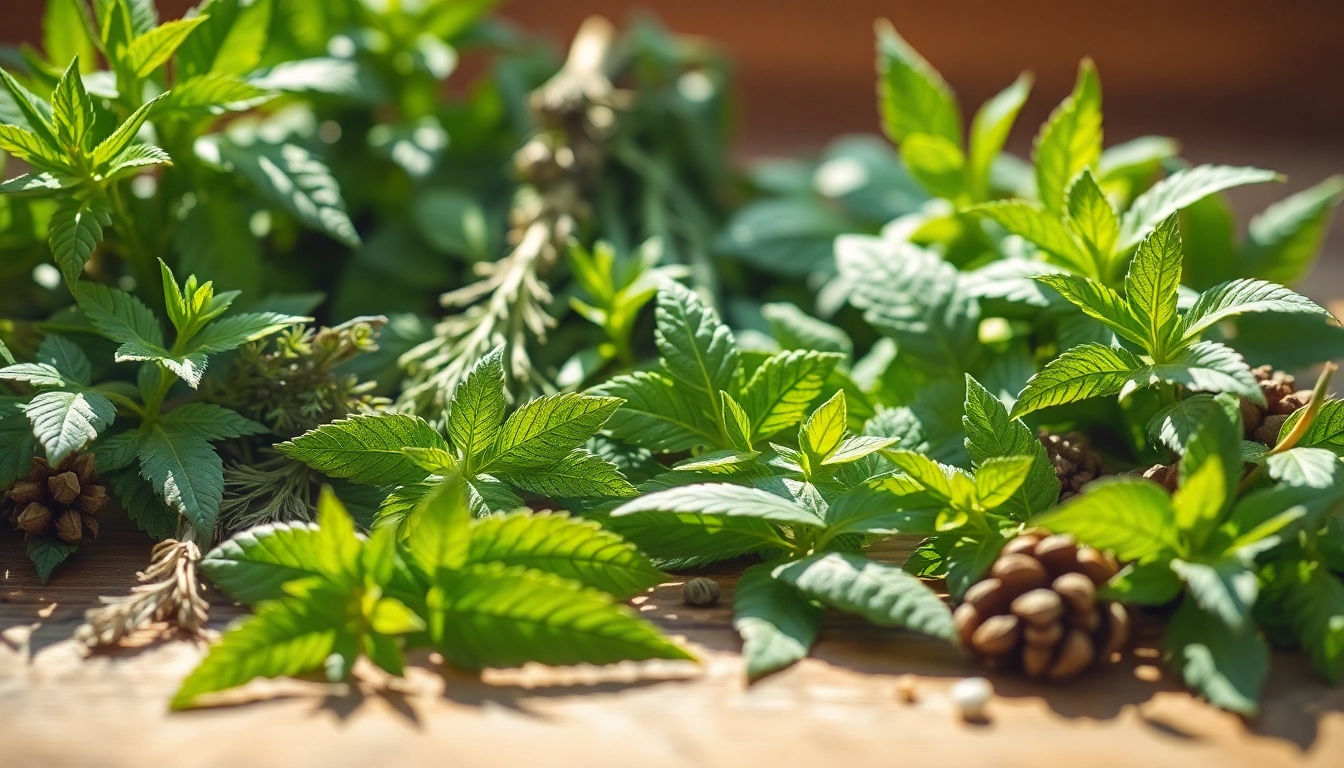
Understanding Alternative Smoking Blends
What is an Alternative Smoking Blend?
An alternative smoking blend refers to a mix of various herbs, flowers, and other botanical ingredients designed to be inhaled. Unlike traditional tobacco or cannabis products, these blends offer a diverse range of flavors and potential benefits without introducing the same level of nicotine or THC. They appeal to a growing number of people looking for smoking alternatives that provide relaxation or enhance social experiences without the associated risks of conventional smoking. For those exploring options, the world of Alternative Smoking Blend presents an exciting frontier.
Benefits of Using Alternative Smoking Blends
Alternative smoking blends offer numerous potential benefits. These blends are known for being more customizable, allowing users to cater the mix to their personal preferences and desired effects. Some common benefits include:
- Customization: Users can create blends tailored to their palate or desired experience, focusing on specific outcomes, such as relaxation or stress relief.
- Fewer Harmful Compounds: Many alternative smoking blends do not contain the tar and other harmful chemicals associated with cigarette smoke, making them potentially less harmful.
- Variety of Flavors: These blends can feature a wide range of flavors, from sweet to earthy, which can enhance the smoking experience.
- Natural Ingredients: Many blends utilize organic or natural herbs, appealing to a more health-conscious audience.
Common Ingredients in Alternative Smoking Blends
There are numerous ingredients that can be found in alternative smoking blends. Some of the most common herbs and plants include:
- Damiana: Often used for its relaxing effects, Damiana is known for its sweet, slightly spicy flavor.
- Lavender: Recognized for its calming properties and pleasant floral aroma, lavender adds a distinctive flavor.
- Red Clover: This herb is often used for its health benefits and smooth texture, making it a great blending component.
- chamomile: Typically associated with herbal teas, chamomile can provide a soothing effect when smoked.
- Mint: Preferred for its refreshing taste, mint complements many blends and adds an invigorating aroma.
Choosing the Right Herbs for Your Blend
Popular Herbs for Alternative Smoking Blends
Selecting the right herbs for your alternative smoking blend is crucial for achieving your desired experience. Here are some popular options you might consider:
- Skullcap: Known for its mild sedative effect, skullcap can help promote relaxation and ease tension.
- Passionflower: This herb is famed for its calming properties and can assist with anxiety and insomnia.
- Hops: Often associated with beer production, hops also have a relaxing quality, which can be beneficial in a smoking blend.
- Rose petals: These add a sweet flavor and aromatic scent, enhancing the overall experience.
How to Source High-Quality Herbs
To ensure your blends are enjoyable and safe, sourcing high-quality herbs is essential. Here are some tips for finding the best ingredients:
- Research Suppliers: Look for reputable suppliers known for their quality and transparency in sourcing.
- Organic Options: Whenever possible, choose organic herbs to avoid pesticides and other chemicals.
- Check for Freshness: Ensure the herbs are vibrant in color and have a strong, pleasant aroma. Dull colors or odor can indicate degradation.
Personalizing Your Alternative Smoking Blend
Personalization is one of the advantages of making alternative smoking blends. Here are a few steps to help tailor your blend:
- Start with a Base: Choose a primary herb to serve as the foundation of your blend, which sets the flavor profile.
- Add Complementary Herbs: Introduce herbs that enhance or contrast with the base herb’s flavors.
- Experiment: Make small batches to test different combinations. Keep notes on what works best for your palate.
Preparation Techniques for Your Smoking Blend
Drying and Curing Herbs Properly
Properly drying and curing herbs is crucial in developing their flavors and maintaining quality. Here’s how you can do it effectively:
- Harvesting: Harvest your herbs at the right time when they are filled with aromatic oils.
- Drying Method: Use a dehydrator, hang the herbs in a dark, well-ventilated area, or lay them flat on a drying rack to prevent mold.
- Curing: After drying, place the herbs in glass jars, loosening the lid periodically to allow moisture to escape. This can enhance flavors over time.
Mixing Methods for Optimal Flavor
Mixing your herbs correctly can significantly enhance the flavor and overall experience. Here are methods to ensure optimal results:
- Grind with Care: Use a grinder to break up herbs uniformly to increase surface area for burning, but take care not to over-grind, which can lead to a loss of flavor and potency.
- Proportions Matter: Experiment with different ratios of herbs to find the blend that is most pleasing to you.
- Incorporate Aromatics: Adding spices or organic flavorings can elevate your blend further, creating a harmonious experience.
Storing Your Alternative Smoking Blend Effectively
To maintain the quality of your alternative smoking blend, proper storage is critical. Follow these guidelines:
- Use Airtight Containers: Glass jars are ideal for preserving freshness. Avoid plastic containers, which can transmit unwanted odors.
- Store in a Cool, Dark Place: Light and heat can degrade herbal quality, so keep your blends in a dark cupboard or drawer.
- Label Containers: Always label your blends with the date of preparation and the composition, which is helpful for future reference.
Health Considerations with Smoking Blends
Understanding Risks and Benefits
While many alternative smoking blends can be a healthier choice, it’s essential to understand the potential risks and benefits:
- Lower Health Risks: Although many herbal blends might contain fewer harmful substances compared to tobacco, inhaling smoke from any source can irritate the lungs.
- Awareness of Allergens: Some individuals may be allergic to specific herbs, so it’s wise to research all ingredients thoroughly prior to use.
- Psychoactive Effects: Some herbs, while not containing THC, might induce mild psychoactive effects; understanding these is crucial for safety.
Mindful Consumption Practices
Practicing mindfulness can enhance the smoking experience and contribute to overall well-being. Consider integrating these habits:
- Set Intentions: Before smoking, take a moment to reflect on your intention – whether it’s for relaxation, creativity, or simply enjoyment.
- Moderate Use: Stay aware of how much you are consuming, recognizing the importance of moderation in maintaining a healthy lifestyle.
- Focus on Environment: Enjoy your smoking blend in a comfortable and pleasant environment, enhancing the overall experience.
Alternatives to Smoking for Wellness
For those looking to experience the benefits of herbal consumption without smoking, consider these alternatives:
- Herbal Teas: These provide a flavorful way to enjoy the benefits of herbs without the inhalation risks associated with smoking.
- Tinctures: Concentrated herbal extracts can offer similar effects and flavors and can be absorbed directly into the bloodstream.
- Herbal Vaporizers: Utilizing a vaporizer allows for lower temperatures and reduced harmful inhalants compared to traditional smoking.
Exploring Popular Recipes for Alternative Smoking Blends
Classic Herbal Blend Recipe
A classic herbal blend can serve as an excellent starting point. Here’s a straightforward recipe:
- Ingredients:
- 1 part Damiana
- 1 part Chamomile
- 1 part Lavender
- 1 part Mint
- Instructions: Mix the herbs well in a bowl, ensuring uniform distribution. Store in an airtight container to preserve freshness.
Exotic Flavor Profiles to Try
If you’re feeling adventurous, here are some exotic flavor combinations to explore:
- Spicy Citrus Blend: Combine Orange Peel, Ginger, and Cinnamon for a unique, warming experience.
- Floral Delight: Mix Rose Petals, Jasmine, and Lemon Balm for a refreshing and uplifting blend.
Customizing Recipes to Suit Your Taste
When crafting your blends, feel free to adjust ingredients based on flavor preferences or desired effects. Here are some ideas:
- Sweetness: If you prefer sweeter blends, consider adding Honeybush or Stevia.
- Enhancing Earthy Notes: Integrate herbs like Mullein or Kava for deeper, earthy flavors.
- Increased Potency: While exploring, you can mix in low doses of tobacco or high-CBD strains if you’re comfortable with cannabis products.




